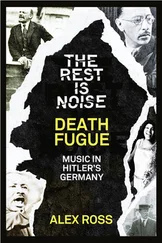But Halem’s approach was ultimately just another brand of romanticism. Much closer to reality was Franz Halder, who steadfastly held to his highly negative view of the regime, refusing to allow himself to be seduced by any of Hitler’s triumphs and finding in the mounting horrors new confirmation of his belief that Hitler was evil incarnate. His willingness to take action flared up once again, but weakly and only for a passing moment For the rest of the time, he doggedly performed his duty, served his country, kept himself isolated, nursed his hatreds, and, despite the darkness and horror on all sides, would not be persuaded to act. At noon on September 28, when news of the Munich conference broke, he lost his composure after so many days of feverish preparation. According to one observer, he “utterly collapsed” on his desk, “weeping and saying that all was lost.” 43
It had been a trying time for Hitler, too, who also thought that all was lost, his life’s work in ruins. But he set about searching relentlessly for ways to recoup the situation. That was the crucial difference.
While the opponents of the regime were in the throes of depression, wondering whether it was possible to take moral stands in such a fallen world or whether those who did so inevitably ended up looking like fools, Hitler forged resolutely ahead. Although still disappointed with the Munich agreement, he realized that an opportunity had arisen to resolve the smoldering conflict with the army once and for all.
Only two weeks after the Wehrmacht had marched into the Sudetenland through the cheering throngs in the second of its “flower wars,” Hitler presented the OKW with the outline of an executive order that was dressed up in the form of an “Appeal to Officers.” It denied military leaders the right to form political judgments, demanding instead “obedience,” “rock-solid confidence,” and “faithful, aggressive determination.” The principle that the general staff should share in political decision making was eliminated, as was the traditional practice, extending back to the era of the kaisers, of registering dissenting views in writing. To the extent they could agree on anything, the generals had joined together from the very beginning in warning against virtually every political decision Hitler had made- and they had been proved wrong time and again. Now the Führer informed the commanders in chief, “I don’t want any more cautionary memoranda.” 1
Under the pressure of this dispute, a split developed within the officer corps for the first time, or at least more visibly than before. On the whole, the officer corps had preserved a surprising degree of internal solidarity over the previous few years and possibly for this reason had managed to maintain a certain self-confidence despite all the setbacks. Hitler had long hoped to break this cohesion; he tested it with the sudden expansion of the Wehrmacht after 1935, which also enabled him to push a greater number of ideologically reliable officers into leadership positions in the military. For much the same reason, the exact responsibilities of the army, navy, and air force were never clearly defined. In addition, Hitler purposely sowed conflict between the high command of the armed forces (OKW), which reported directly to him, and the high command of the army (Oberkommando des Heeres, or OKH), led by the obstinate old officers’ caste. Despite all this, internal cohesion remained solid. The only exception had occurred early in the year when Admiral Erich Raeder, commander in chief of the navy, rejected an appeal to help with the rehabilitation of Fritsch: “That’s a mess that the boys in red pants got themselves into,” he said, “and they can get themselves out of it.” 2
In the light of Hitler’s foreign policy successes, however, the ranks now began to waver. For the first time, senior officers endorsed his rebuke of the army high command. They lamented the lack of faith and loss of confidence the OKH showed in the Führer. The full extent of the split is evidenced in a letter written by OKW general Alfred Jodl in which he describes the OKH as the “enemy side.” The consequence was that no resistance was offered when Hitler took advantage of the situation to reshuffle personnel for a second time, dismissing a number of generals whose skeptical attitudes boded ill for the sort of unconditional obedience he now expected, including Wilhelm Adam, Hermann Geyer, and Wilhelm Ulex. Nevertheless, despite all the traps Hitler attempted to set within the officer corps and despite the tensions that did arise, the traditional esprit de corps remained quite strong. Those who opposed Hitler or even conspired against him over the ensuing years were generally safe from denunciation by their fellow officers. Among the rare exceptions to this rule were Erich von Manstein, who informed on Tresckow early in 1944; Wilhelm Keitel, who threatened to denounce any officer who criticized the Führer, “including on church or Jewish questions”; and Heinz Guderian, who only refrained from denouncing a fellow officer when he was similarly threatened in return. 3
The success of Hitler’s initial attempt to repress army interference in political affairs soon became apparent. On the night of November 9-10, 1938, which has come to be known as Kristallnacht, “spontaneous demonstrations,” as Joseph Goebbels phrased it in his directive, were organized all over Germany. Synagogues were burned, Jewish-owned stores demolished, and large numbers of Jews arrested; some were killed. It was plain to see that the government was as responsible as the hordes of SA men were for the arson, plunder, and murder of that night. People were horrified and shamed but remained quiet. Their feelings, however, were soon given voice at a conference of army commanders, where a number of generals did not hesitate to express their outrage. General Fedor von Bock even asked his fellow officers excitedly whether someone couldn’t just “string up that swine Coebbels.” 4
Walther von Brauchitsch, the army commander in chief, remained immovable. After all the disputes and unpleasantness of the previous weeks, he simply shrugged his shoulders at demands that he lodge a protest. Raeder, on the other hand, backed the formal protests of a number of senior naval officers, among them Admiral Conrad Patzig and Captains Günther Lütjens and Karl Dönitz, and sought an audience with the Führer. The only response Raeder received, however, was that the SA district leaders had gotten out of control, a fabrication that satisfied him. 5Meanwhile, at a general meeting in the Reichsbank, Hjalmar Schacht sharply condemned the events. In addition, the senior SA commander and prefect of the Berlin police, Count Wolf-Heinrich Helldorf, who had been absent from the city that night, summoned high-ranking police officials to a meeting immediately upon his return and bitterly reproached them for having obeyed the order to stand by and do nothing. If he had been in Berlin, he told them, he would have issued orders to fire on the SA mobs. In the gloomy silence of those November days, the sound of another voice rose for the first time, that of a young captain named Count Claus Schenk von Stauffenberg, who criticized the officer corps as seeming dumbstruck, adding that not much more could be expected from people who had already had their backbones broken several times. 6
Hitler rarely missed an opportunity to demonstrate to those he had defeated the full extent of their loss. On the morning of March 15, 1939, he finally fulfilled his dream of taking Prague, sending motorized units into the city through swirling spring snow. He kept the officer corps in the dark about his exact plans until the last possible minute, however, at times going so far as to mislead it with placating words. Even the devoted Keitel, chief of the OKW, later complained that he knew nothing of Hitler’s intentions and was left to guess.
Читать дальше
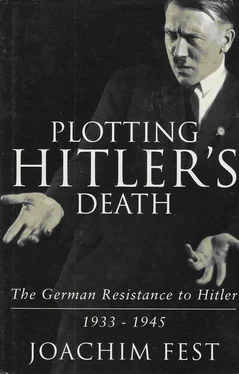
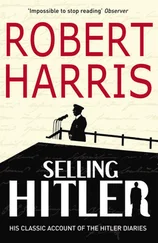
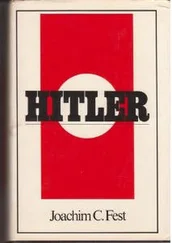
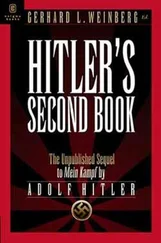
![Traudl Junge - Hitler's Last Secretary - A Firsthand Account of Life with Hitler [aka Until the Final Hour]](/books/416681/traudl-junge-hitler-s-last-secretary-a-firsthand-thumb.webp)





